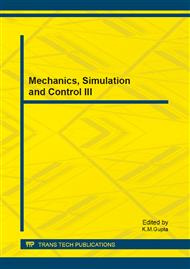[1]
M. Semlitisch, Titanium alloys for hip joint replacements, Clinical Mater., 2, (1987), pp.1-13.
Google Scholar
[2]
M. Niinomi, Mechanical properties of biomedical titanium alloys, Mater. Sci. Eng., 243, (1998), pp.231-236.
Google Scholar
[3]
H.M. Silva, S.G. Schneider, and C.M. Neto, Study nontoxic aluminum and vanadium-free titanium alloys for biomedical applications, Mater. Sci. Eng., 24, (2004), pp.679-682.
DOI: 10.1016/j.msec.2004.08.051
Google Scholar
[4]
D. Kuroda, M. Niinomi, M. Morinaga, Y. Kato, and T. Yashiro, Design and mechanical properties of new β type titanium alloys for implant materials, Mater. Sci. Eng., 243, (1998), pp.244-249.
DOI: 10.1016/s0921-5093(97)00808-3
Google Scholar
[5]
E.B. Taddei, V.A.R. Henriques, C.R.M. Silva, and C.A.A. Cairo, Production of new titanium alloy for orthopaedic implants, Mater. Sci. Eng., 24, (2004), pp.683-687.
DOI: 10.1016/j.msec.2004.08.011
Google Scholar
[6]
R. Banerjee, S. Nag, H.L. Fraser, A novel combinatorial approach to the development of beta titanium alloys for orthopedic implants, Mater. Sci. Eng., 25, (2005), pp.282-289.
DOI: 10.1016/j.msec.2004.12.010
Google Scholar
[7]
J.I. Qazi, B. Marquardt, H.J. Rack, High strength metastable titanium alloys for biomedical applications, JOM, 56, (2004), pp.49-51.
DOI: 10.1007/s11837-004-0253-9
Google Scholar
[8]
H.J. Rack and J.I. Qazi, Titanium alloys for biomedical applications, Mater. Sci. Eng., 26, (2006), pp.1269-1277.
Google Scholar
[9]
F. Guillemot, F. Prima, R. Bareille, D. Gordin, T. Gloriant, M.C. Porte-Durrieu, D. Ansel, and C. Baquey, Design of new titanium alloys for orthopedic applications, Med. & Bio. Eng. & Compu., 42, (2004), pp.137-141.
DOI: 10.1007/bf02351023
Google Scholar
[10]
J.O. Peters, G. Lutjering, Comparison of the fatigue and fracture of alpha Plus beta and beta titanium alloys, Met. & Mater. Trans., 32, (2001), pp.2805-2818.
Google Scholar
[11]
Y.Q. Zhao, S.W. Xin, W.D. Zeng, Effect of major alloying elements on microstructure and mechanical properties of a highly β stabilized titanium alloy, J. Alloys Compd., 48, (2009), p.190–194.
DOI: 10.1016/j.jallcom.2009.03.042
Google Scholar
[12]
ASM Handbook, Heat Treating, 4, (1991), pp.913-923.
Google Scholar
[13]
K.V. Sudhakar, Kallen Konen, Keeley Floreen, Beta-titanium biomedical alloy: Effect of thermal processing on mechanical properties, Journal of Archives of Metallurgy and Materials, 57(3), (2012), 753-757.
DOI: 10.2478/v10172-012-0082-8
Google Scholar
[14]
M. Caudill, Neural Network Primer: Part 1. Al Expert, (1987), pp.46-52.
Google Scholar
[15]
M.E. Haque and K.V. Sudhakar, ANN-based Prediction Model for Fatigue Crack Growth in DP Steel, International Journal of Fatigue & Fracture of Engineering Materials and Structures, 24 (1), (2001), pp.63-68.
DOI: 10.1046/j.1460-2695.2001.00361.x
Google Scholar
[16]
S.E. Fahlman and C. Lebiere, The Cascade-Correlation Learning Architecture, School of Computer Science, Carnegie Mellon University, Pittsburgh, PA, USA, CMU-CS-90-100, February 14, 1990, Retrieved of March 6, (2012).
Google Scholar


